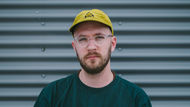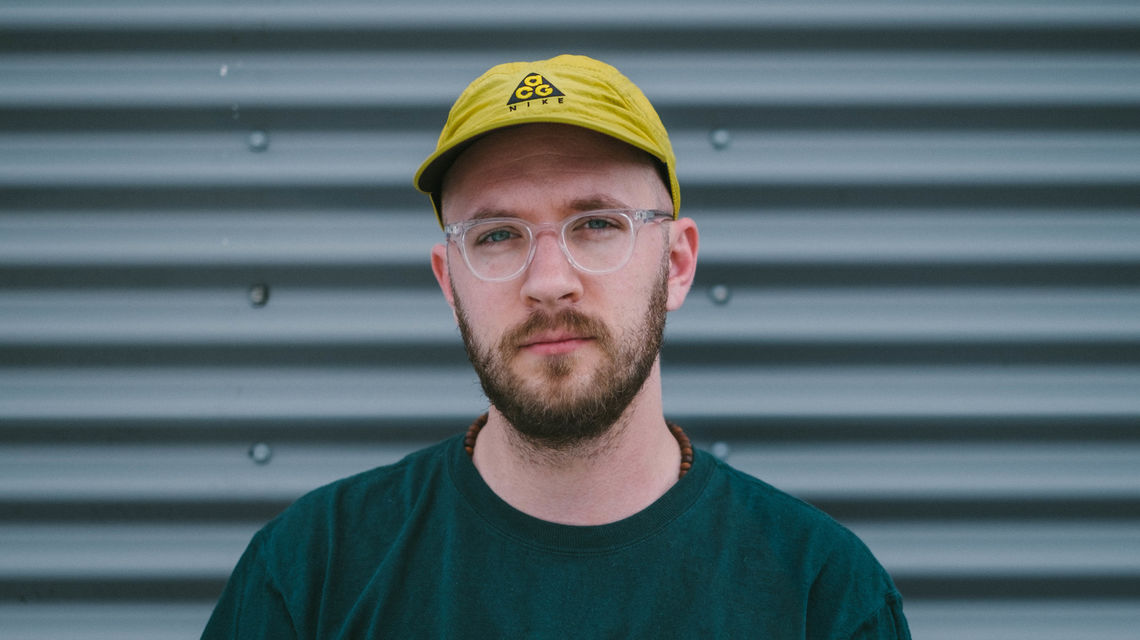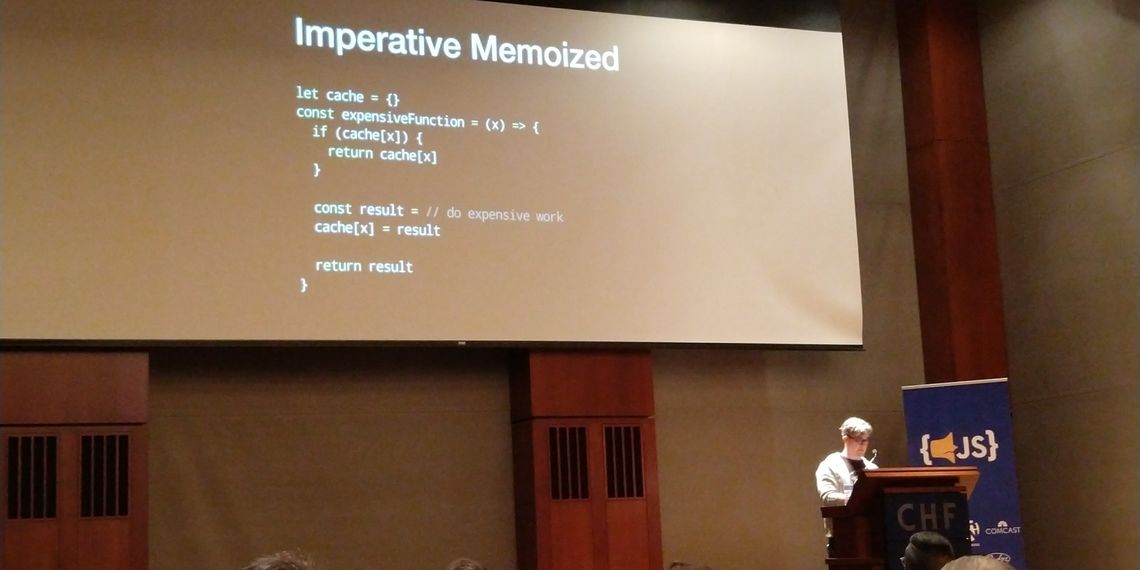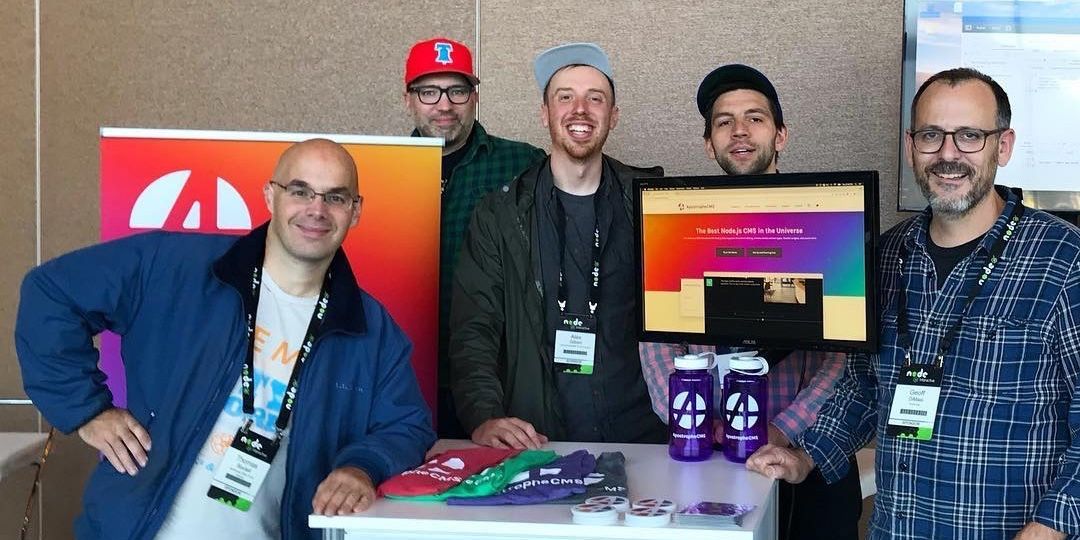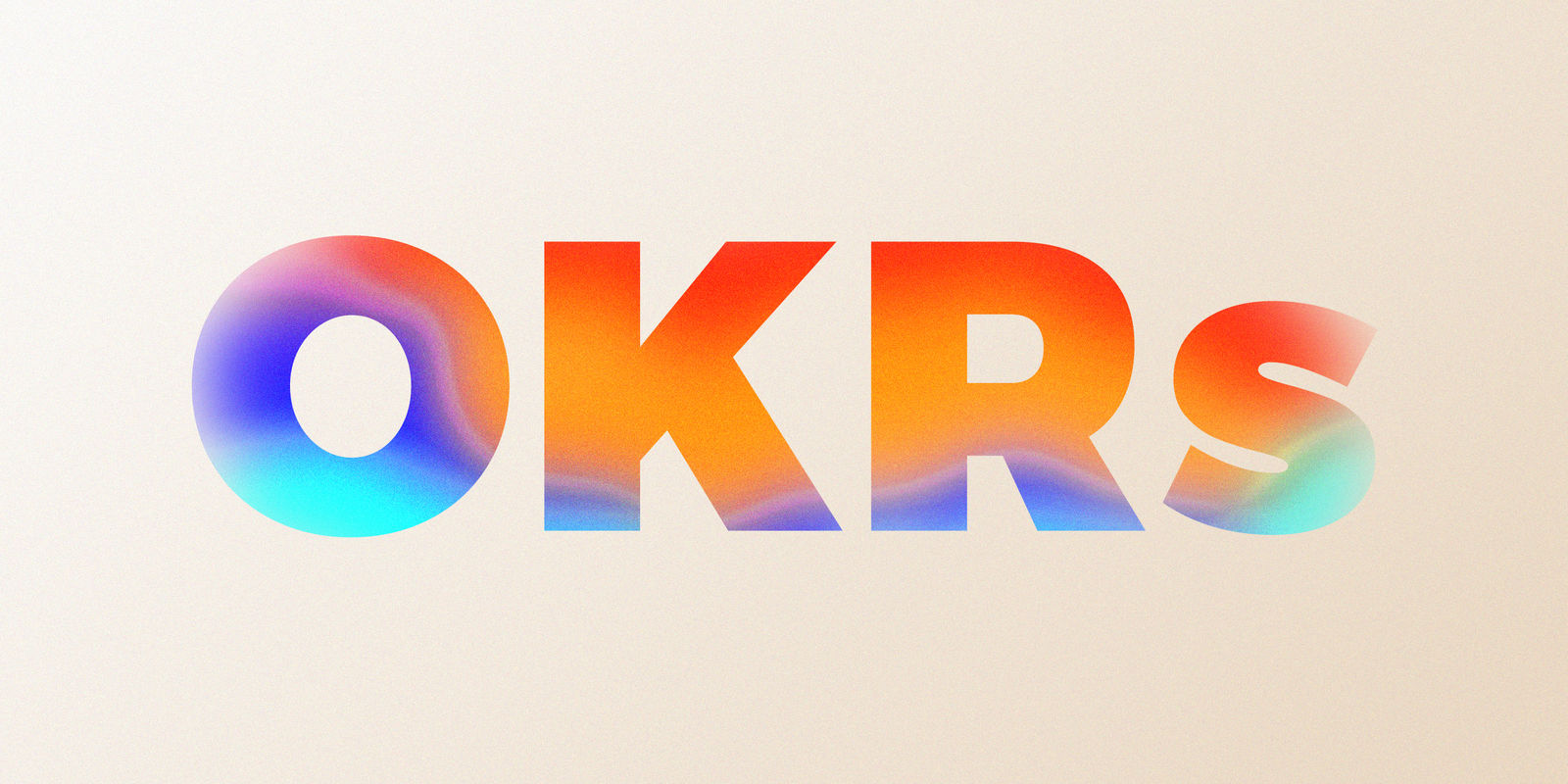
If your business is anything like ours, you hopefully have a vision of where you want to go and what you want to achieve.
While it is absolutely necessary to be able to articulate this vision, it can be a surprising struggle to map out just how you are going to get to that place where you want to go, and then be able to know when you’ve arrived. Lack of clarity around this can lead to a team that feels frustrated and uninterested, or worse, wants to help but doesn’t know how.
With a desire to improve how we were setting and tracking our company goals, in late 2016 we became interested in the OKR methodology. It is a framework adopted and documented by some of the biggest tech companies in the world and was touted as being highly effective.
Conceptually, it is really quite simple—objectives are set to determine what you want to do, key results are used to measure if you are making progress.
So at the start of this year we committed to trying this for ourselves and we dug into the various tools and approaches we could take to establish this as a practice. We discovered that there is not necessarily a singular "right" way, and quite a bit of wrong ways. One of the common themes we heard over and over were companies trying to use OKRs, not feeling satisfied, and dropping off. We felt some of those pains ourselves in our early attempts. The promise was that if you stuck with it and worked the system, it would work.
So, in our sticking with it, I wanted to share a few of the insights we learned...
First, have a company goal.
This should be an extension of your company’s vision and it should come from the top.
Where are you going? Why is this an exciting place to come to work every day? What are we working towards?
We often use the metaphor of this goal being akin to winning the Super Bowl.
Be judicious in selecting these, they will definitely last longer than a quarter, probably longer than a year. Maybe more. For P’unk Ave, we decided to focus on 2 company-wide goals. In order to achieve them, they will require a lot of work and time. Don’t feel bad about rallying behind a single goal. Be cautious of setting too many, they can’t all be the most important thing.
Be intentional and methodical in the planning of your objectives and key results.
You can’t plan haphazardly. Set aside a team and a time to tackle this.
Under each company goal there are probably a handful of objectives that if you achieve them, would bring you closer to achieving that high level company goal—winning the Super Bowl. It is important to identify which of these objectives are the most important at the time they are being set so that they can prioritized and executed on.
We discovered an excellent article from O’Reilly on OKRs which outlined how to structure an OKR planning session, which we stole a ton from to create our process.
Prior to the start of each quarter we meet with a small leadership group to map out which objectives will be getting focus. During that meeting we employ a think-pair share technique to rapidly get ideas out. Our goal is to have 3 or 4 strong and relevant objectives come from this.
Important things to keep in mind when setting Objectives:
-
Objectives should be qualitative and inspirational.
-
They should be hard, but not impossible.
-
They should be time-bound. Will it take a quarter? It should. If it can be done in 2 weeks it is not ambitious enough. If it will take a year, reel it in.
-
We’ve gravitated towards setting objectives that represent the product, marketing, and sales of our business—you don’t have to do this, but it covers a good swath of most companies' needs.
The next step is to attribute key results to each objective. If an objective is representing what you want your company to achieve, a key result is the indicator by which you measure whether you achieved that objective. To rapidly get some ideas out, we again use the think-pair share design exercise to identify possible ways to measure.
Important things to keep in mind when setting Key Results:
-
Key Results should be quantifiable.
-
They should be hard, but not impossible—a 50%-70% shot of making the goal is a good place to aim.
-
Key Results should not be entirely influenced by you, the number should be able to go up or down throughout the quarter based on some other factor. If you can check off a box, it’s not a key result. (Good KR: Increase traffic on our blog by 20%… Bad KR: Write 5 new blog posts)
-
Most importantly, a key result is not a task! It is a way to measure the outcome of a series of tasks. (Good task: Write 5 new blog posts.)
The last one is really hard. When we have our planning sessions we write out the qualities of both objectives and key results extra big on a whiteboard and we still have lapses and accidentally write a task instead of a key result.

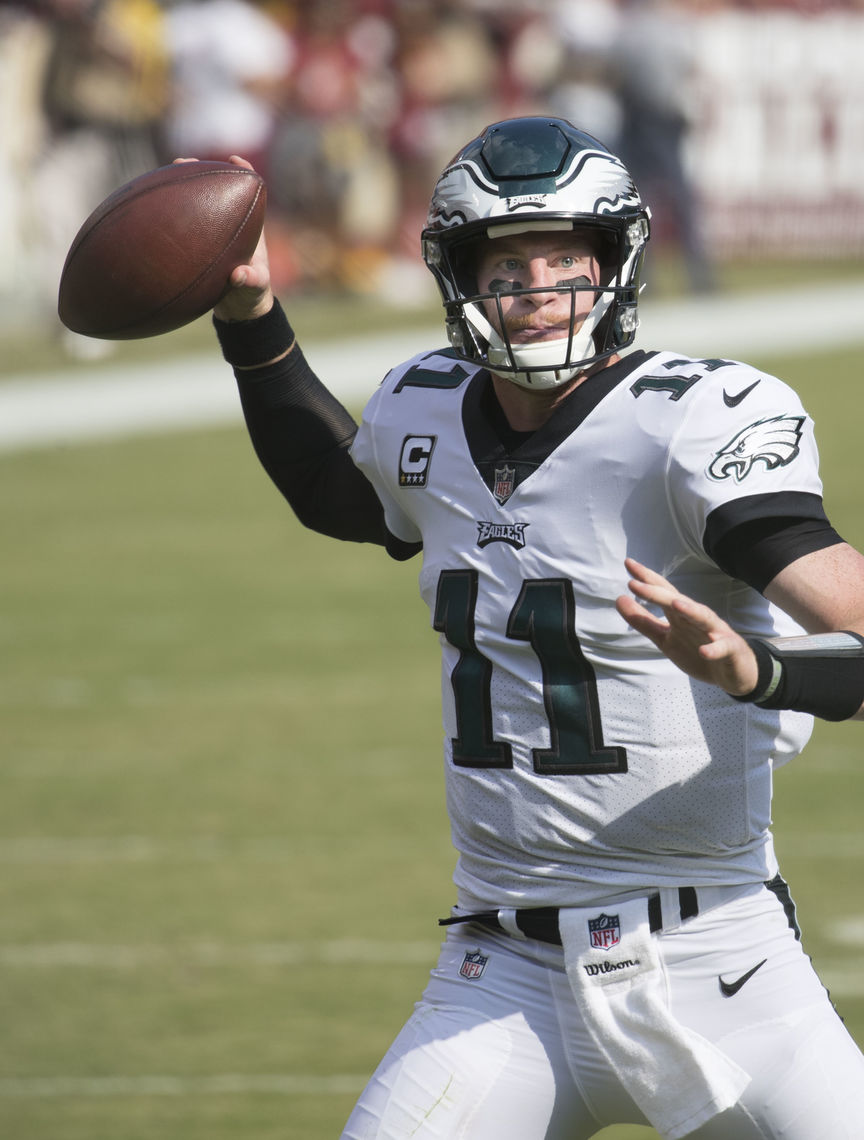
If we continue to think of OKRs using the Super Bowl metaphor, good objectives and key results might be:
Company Goal
Win the Super Bowl.
(This is ultimately where we are headed.)
Objective
We have the best quarterback in the league.
(We believe if we have the best quarterback in the league, we can win the Super Bowl.)
Key Result
Quarterback has quarterback rating of 110 or higher.
(If our quarterback has a rating of 110 or higher, they have a high probability of quantifiably being the best in the league.)
Task
Quarterback has at least 38 passing attempts per game.
(Throwing this amount of passes per game will give the opportunity to hit the quarterback rating we want.)
Create actionable items that the team can own.
Creating the plans for what you’ll do to meet your key results—and figuring out who will actually do it. These are all those tasks!
After we’ve established our Objectives and Key Results with the smaller leadership team, we prepare them to be shared with the larger team during our quarterly State of P’unk—a reporting on team updates, work we accomplished that quarter, financials, and now OKRs. This has been a transformative ritual in bringing these goals to light and creating transparency and accountability around their existence. (It’s also when we report on the previous quarter’s OKRs.)
More recently, we have moved to following up the initial OKR planning session with a team-wide planning session focused around identifying tasks that nest under and support the OKRs. These come from the bottom up.
We had everyone sticky note various tasks that fell under the quarter’s established objectives. Each team member then went around and sticker-dotted their top 3 tasks they were personally interested in. This allows the team focus on what is compelling to them personally, but in a way that is connected to moving the needle on the larger company objectives.
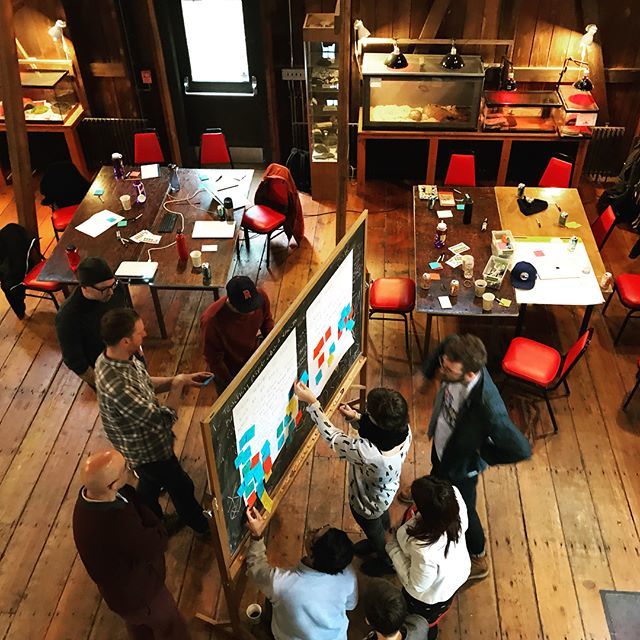
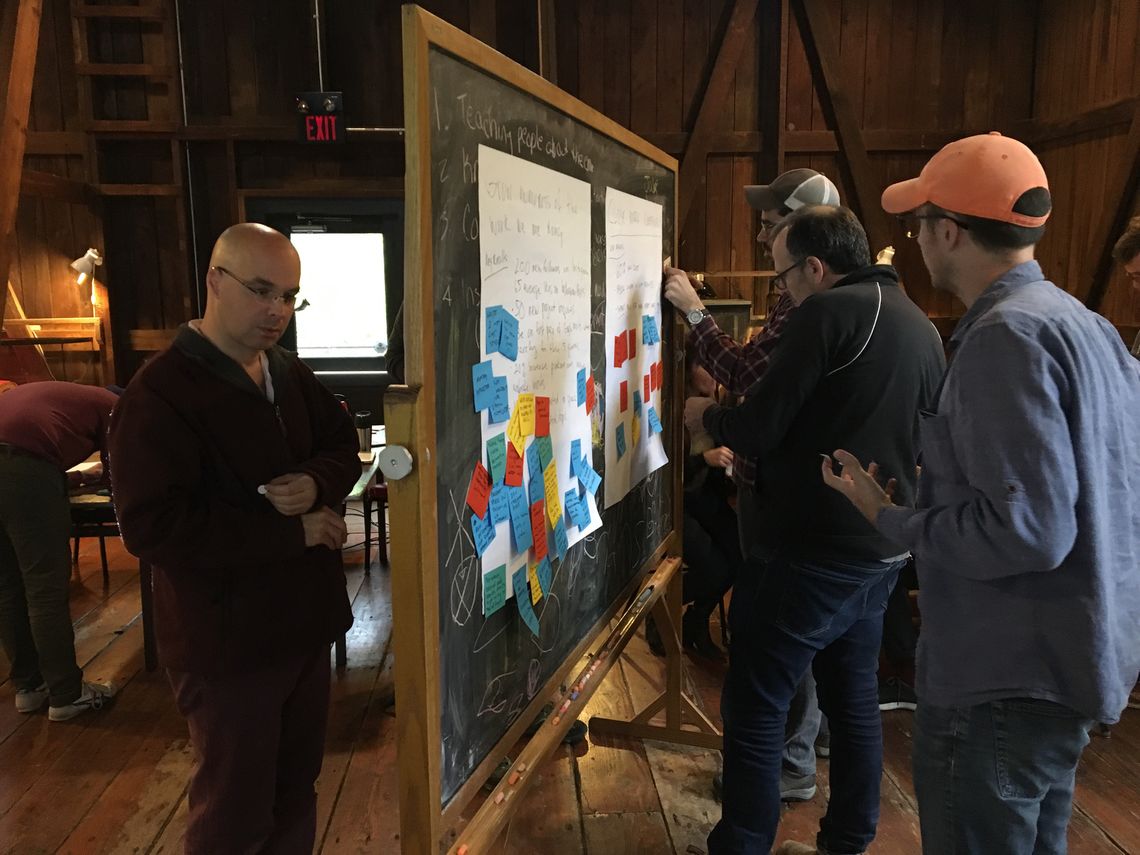
Organize And Mobilize.
Prepare, stay focused, execute.
Coming out of this final effort, the objectives, key results, and tasks are hopefully taking shape. The last piece is to document them in a way that allows for transparency and clarity and on-going attention.
***As a warning: without proper time and attention paid to this step, things could be delayed or not take off at all. Don’t come this far to stop here!***
We experimented with a few tools but settled on using a Trello board as it was already in the suite of tools our team uses. Every objective, key result, and task has a card that can be assigned to a team member and filtered by progress, area, or person. Don’t let the tool trip you up—use what is comfortable. It is about transparency and accountability. It could be as low-fi as a pin board in a shared space. That being said, Trello has been really good for us.
The OKRs Trello board is reviewed weekly on Mondays by our team leads, planning for what will happen during the week, and is used as a focal point of all individual's 1:1 check ins. All team members have access to the board and are routinely updating based on weekly progress.
Friday wins.
Take the time to reflect and celebrate the progress you’ve made.
We end each week with a mini-happy hour at our studio where we share and celebrate the wins that took place throughout the week as they relate to our OKRs. It is a way to cap the week off on a high note and remind us why we do the work we do. As minor of a ritual as it is, it has become a good incentive to make progress on your tasks so that you have something to share. We humans are funny like that.
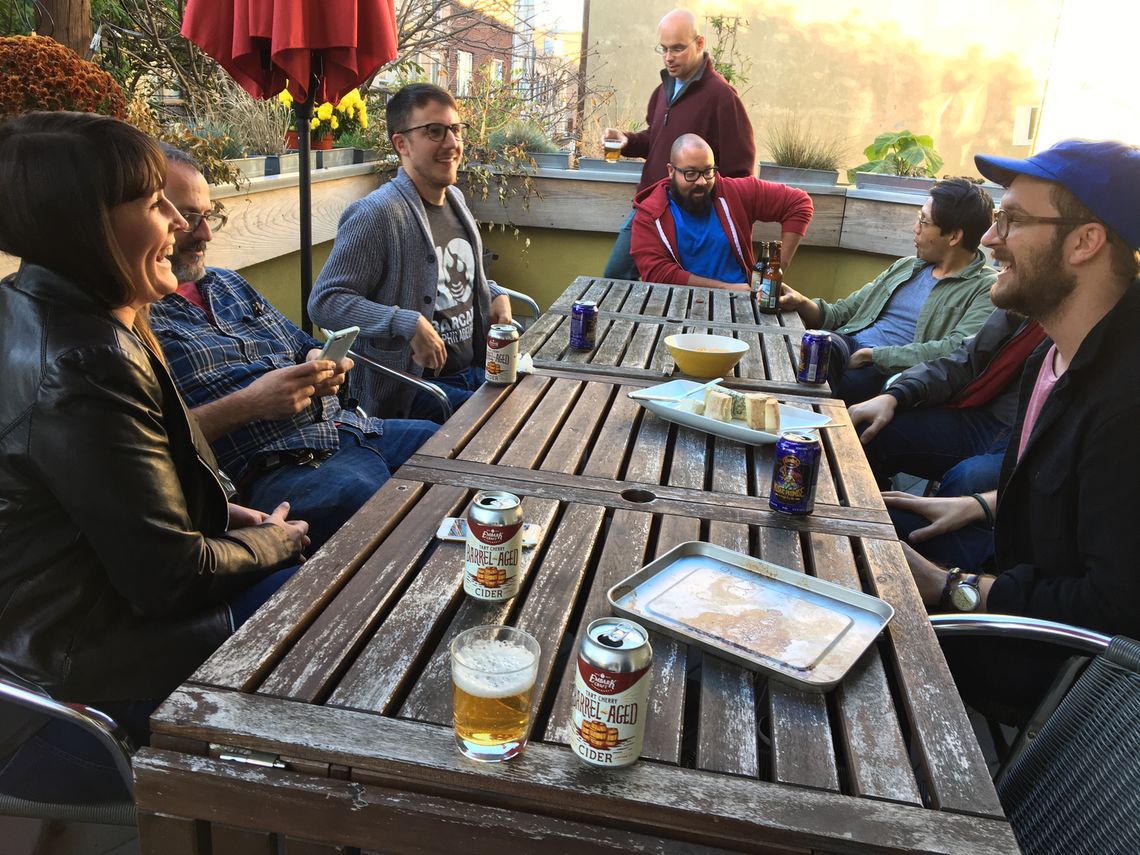
Major takeaways.
My biggest takeaway has been that the framework is easy but OKRs are hard. Wrapping your head around them can be a challenge, finding the time to work on them can be difficult, and creating buy-in requires effort. At some point you’ll probably want to give up and move on. Don’t.
Tackling hard challenges is at the core of our business—through sticking with this, it has gotten easier to plan every quarter, easier to find the right ways for the team to be more involved, and best of all, we have seen that—as promised—it works. Throughout 2017, each quarter we’ve been able to achieve goals we’ve set, and make progress on moving closer towards our biggest company goals.
